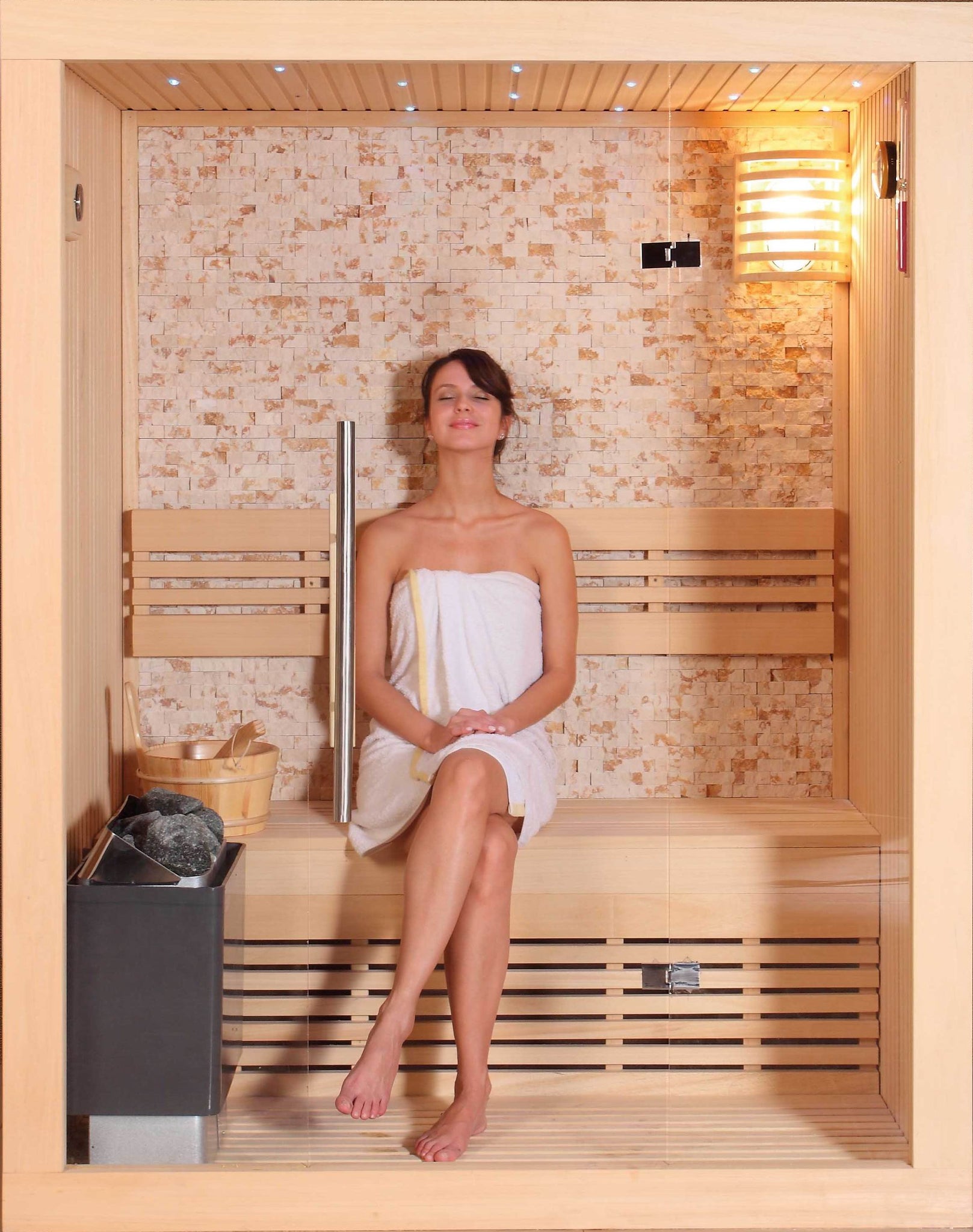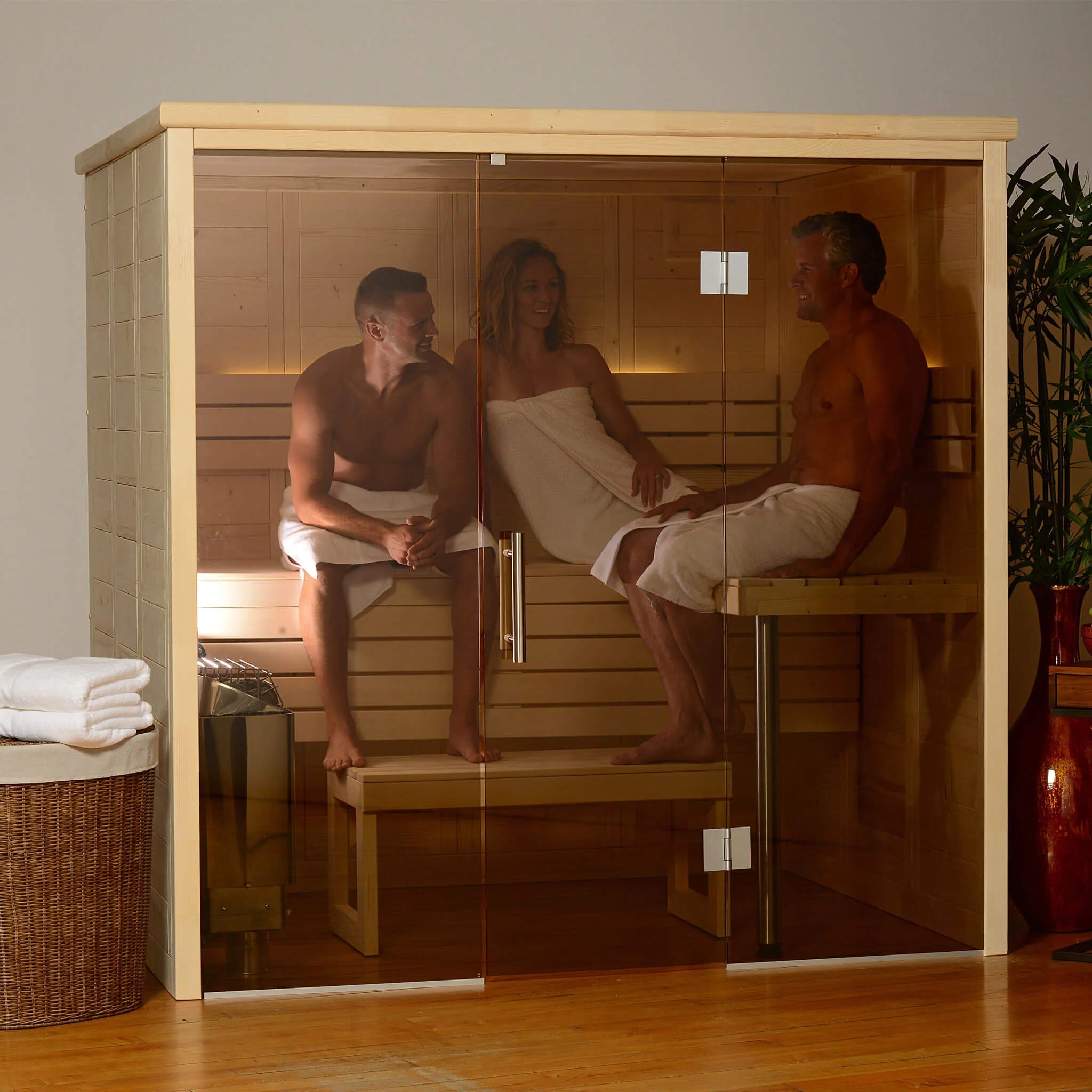Traditional Sauna Things To Know Before You Buy
Traditional Sauna Fundamentals Explained
Table of ContentsGetting My Traditional Sauna To WorkGetting The Traditional Sauna To WorkThe 9-Second Trick For Traditional SaunaExcitement About Traditional SaunaSome Known Details About Traditional Sauna
The majority of the weight shed in a sauna is water loss and is re-gained upon rehydrating. Without an uncertainty sauna can be an essential component of a healthy weight loss program. To take a look at the differences between traditional and IR saunas, I will separate these right into proven, academic, and made distinctions.Therefore, the hottest point in the saunawhich is at the ceiling straight over the sauna heateris commonly between 185 and 190 F. Claims that a conventional sauna surpasses 200 F is just not true and not suitable for electric saunas sold in the US. The temperature for a far-infrared sauna is typically set in between 120 and 140 F; however, unlike the traditional sauna, the objective in and IR area is not to accomplish a high temperature level.

When a standard sauna has been effectively heated up, the sauna walls are warm, the air temperature level has attained set temperature and the rocks are extremely heated. As a fascinating side note, the heated wall surfaces and the rocks are releasing far-infrared warmth, combined with the heated air, to develop an "enveloping heat".
Fascination About Traditional Sauna
When the heat is attained, the components cycle on and off to preserve the high temperature level. Most standard sauna users enjoy pouring water over the rocks to produce vapor to increase sauna moisture degrees. The advantages of pouring water over the rocks include: making the area more comfortable, dampening the nasal flows, and permitting the use of aromatherapy by blending crucial oils with the water.

When the energy goes into the body, it triggers the body temperature to enhance and eventually causes sweat. In an infrared sauna it's vital for the emitters/heaters to continue to be on nearly continuously. Given that there is no mass of rocks to preserve warm, the sauna will cool if the emitters turned off.
The Greatest Guide To Traditional Sauna
As discussed over, the sauna bather in an infrared space wishes to place himself before operating emitters to obtain maximum benefit from the warm. The home heating time for both areas can be really different, depending on just how the rooms are made use of. For a typical sauna, a bather must allow 30-40 mins for the room to accomplish a preferred temperature level and to effectively pre-heat the rocks.

A well created sauna will usually attain a temperature of 150-160 F in about 30-40 minutes. For hotter temperature levels, the space may require to warm for a longer period.
To some, 15 minutes was "wasted" while the infrared energy warmed the wood panels rather than warming a body, while others find a pre-heated area to be a lot more comfortable and think a raised beginning temperature is necessary to begin sweating. The length of recommended use More Info for each space is roughly the very same (10-15 minutes per session); nonetheless, due to the lower air temperature levels and the capability to really feel the impacts of infrared warmth much faster than a typical sauna, it is not unusual for an individual to invest important site a total amount of 20-30 mins in an infrared sauna.
All About Traditional Sauna

The typical price per kWH of electrical power in the united state is roughly $0.11, so a 4.5 kW heating system will cost about $.50 to run for one hour, if the heating system runs continuously for one hour. Normally a sauna heater will run for 75% of the very first hour and 50% of succeeding hours on since the aspects cycle once the established temperature is attained.
A two person far-infrared space is typically literally smaller than a standard sauna, usually about 4' x 4' or smaller sized. The IR furnace is usually 1.5-1.7 kW making use of a 120 volt 15 amp plug-in solution. Given that the space can be made use of sooner than a sauna room, we will presume the room is utilized for to of an hour including warm up time.
There is a seldom reviewed difference in the social experience in between the two rooms. While our culture has lost several of the social benefit of the standard sauna experience, it can be extremely socially fulfilling (Traditional Sauna). From family time in the sauna, to heart-felt conversations with better halves, to sauna partiesthe conventional sauna experience can result in intimate socializing
What Does Traditional Sauna Mean?
The majority of higher end click for source infrared areas include colored light treatment, noise systems and full-glass fronts.